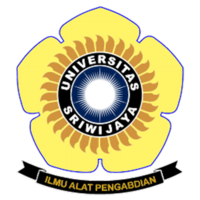Potensi Pengembalian Karbon Organik dan Hara dalam Sistem Perkebunan Kelapa Sawit
Abstract
Irsan F, Anwar S. 2020. Potential returns of organic carbon and nutrients in oil palm plantation systems. In: Herlinda S et al. (Eds.), Prosiding Seminar Nasional Lahan Suboptimal ke-8 Tahun 2020, Palembang 20 Oktober 2020. pp. xx. Palembang: Penerbit & Percetakan Universitas Sriwijaya (UNSRI).
Oil palm plantations development in peatlands is still being a concern related to global trade and environment issues such as issue which related to terrestrial carbon. The existing estimation of oil palm carbon absorption was only focused on standing biomass. Organic carbon which is derived from harvested biomass (fresh fruit bunch) and returned biomass through pruning has not much been studied in terms of oil palm carbon absorption. Meanwhile, concerning carbon absorbtion in oil palm biomass in peatland has not been much data collected because of the large cost and takes a long time. Based on that situation, this research was conducted at a detailed level so that it can provide information about carbon absorbtion on peatland that have been converted into oil palm agroecosystem. Besides organic carbon, returned biomass also contained essential nutrients such as potassium, calcium and magnesium which very crucial for cultivation in peatlands. The objectives of this research were to study the potency of biomass, carbon and nutrient (K, Ca and Mg) returned in one life cycle of oil palm. The result shows that the potency of returned biomass in one life cycle was 102.21-130.00 tons dry matter/ha or equivalent to 206.71-262.91 tons CO2/ha. While returned nutrient was 1.40-1.78 tons K/ha, 550.35-699.99 kg Ca/ha and 276.03-351.08 kg Mg/ha.
Oil palm plantations development in peatlands is still being a concern related to global trade and environment issues such as issue which related to terrestrial carbon. The existing estimation of oil palm carbon absorption was only focused on standing biomass. Organic carbon which is derived from harvested biomass (fresh fruit bunch) and returned biomass through pruning has not much been studied in terms of oil palm carbon absorption. Meanwhile, concerning carbon absorbtion in oil palm biomass in peatland has not been much data collected because of the large cost and takes a long time. Based on that situation, this research was conducted at a detailed level so that it can provide information about carbon absorbtion on peatland that have been converted into oil palm agroecosystem. Besides organic carbon, returned biomass also contained essential nutrients such as potassium, calcium and magnesium which very crucial for cultivation in peatlands. The objectives of this research were to study the potency of biomass, carbon and nutrient (K, Ca and Mg) returned in one life cycle of oil palm. The result shows that the potency of returned biomass in one life cycle was 102.21-130.00 tons dry matter/ha or equivalent to 206.71-262.91 tons CO2/ha. While returned nutrient was 1.40-1.78 tons K/ha, 550.35-699.99 kg Ca/ha and 276.03-351.08 kg Mg/ha.
Keywords
biomass, frond, nutrient, oil palm, pruning
Full Text:
PDFArticle Metrics
Abstract view : 241 timesPDF - 403 times
Refbacks
- There are currently no refbacks.

